In this paper titled "The Kidney Knows the Answers to the hidden Messages in body water", the memorial lecture on retirement of Sung-Kyew Kang who laid the groundwork for establishment in the Korean Society of Electrolyte and Blood Pressure Research is summarized.
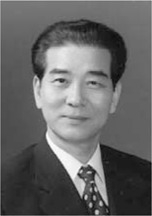
I have been studing as nephrologist to date. Next year, I will be retired from university school. Therefore I would like to summarize worked papers during over 30 years as following:
Influence of intraventricular morphine on the renal function of the rabbit
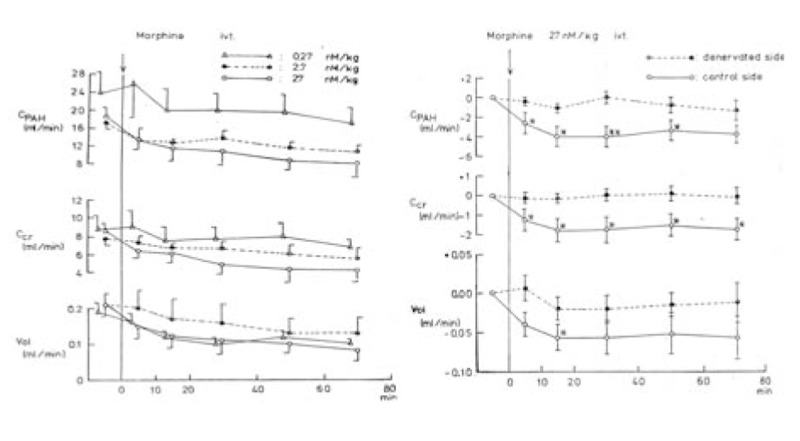
As it has been known that the renal function is under the regulatory influences of central nervous system by way of various mediators and as it has recently been suggested that various endogenous morphine-like substances (endorphins) found to be existing in the brain play important phsiological roles as a neurotransmitter, in changing the modality in the pain perception, behavior, salivation etc., the renotropic effects of morphine administered directly into the lateral ventricle of the rabbit were investigated in this study.
These observations indicate that morphine administered intraventicularly influences the renal function via nerve pathway, in addition to the liberation of ADH, and it was suggested that endorphines might play a role in the center-mediated regulation of renal function. (The Chonman Medical J, 1978)
Go to : 
Changes of 2.3-DPG concentration during Hemodialysis
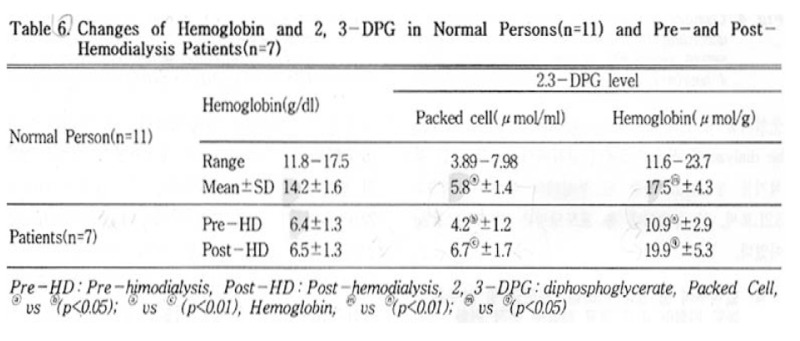
The present study is an investigation of the mechanism of changes in erythrocyte 2,3-diphosphoglyceric acid (2,3-DPG) in patients with chronic renal failure during hemodialysis. The study was conducted in 7 Korean and 6 American patients on maintenance hemodialysis.
The results suggest that the increase in 2,3-DPG with hemodialysis is probably caused by increase in pH and increased glucose utilization.
(Korean J Nephrology, 1984)
Go to : 
Changes of Plasma K concentration by lactic acid
The purpose of the present investigation was to determine the effect of severe orgnic acidosis on serum K+ concentration. This finding suggests that severe organic acidosis may produce hyperkalemia, al though the degree of hyperkalemia is not as severe as in inorganic acidosisl. (J Korean Medical Association, 1988)
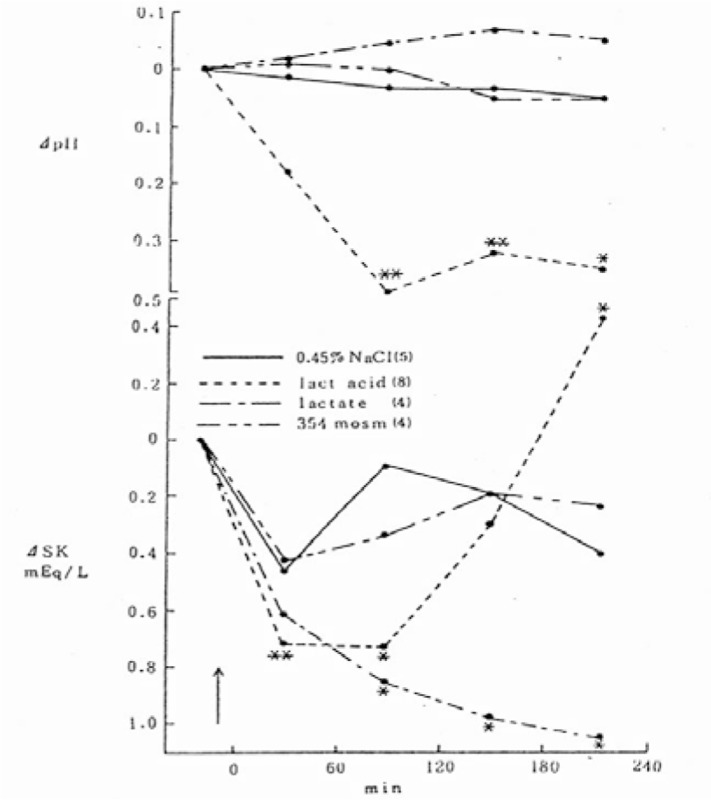
Go to : 
Antihypertensive Effects with Transdermal Application of a PGE2
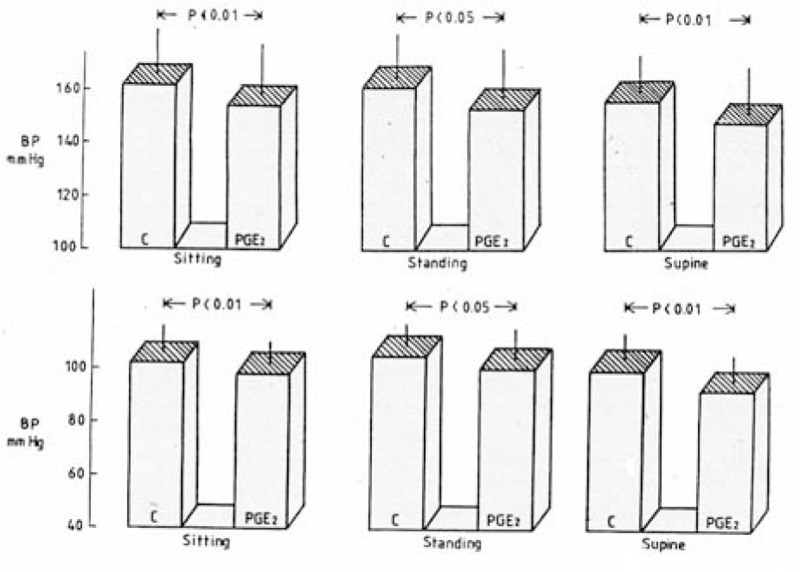
Transdermally administration of Prostaglandin E2 (PGE2) allows it to penetrate quickly and be absorbed constantly. This serves to extend the antihypertensive effect of the drug for a long period with only a single administration of drug per day.
However, since the transdermal administration of PGE2 in human subjects is rare in clinical reports, the authors applied PGE2 analog to the skin of 20 mild to moderate essential hypertensive patients to evaluate its hypertensive effect.
In conclusion, administration of PGE2 transderamally showed antihypertensive action without any significant side effect. Also, only one administration per day was needed for antihypertensive action, which makes PGE2 a promising new possivility. (Korean J Internal Medicine, 1990)
Go to : 
Clinical Study on Lupus Nephritis
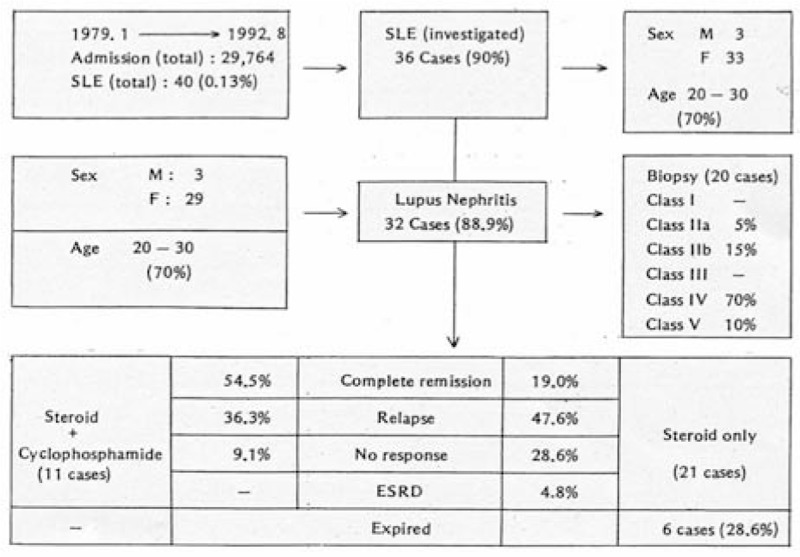
Systemic lupus erythematosus (SLE) is a multisystem inflammatory disoder characterized by the production of antibodies that react with many differnet self-antigens. Lupus nephritis has long been considered one of the most ominous components of SLE. The extreme diversity of the renal changes indicates that many variables are likely to be involved. Lupus nephritis is characterized by various clinicl course, histologic and immunologic patterns.
We evaluated the clinical characteristics of 32 lupus nephritis patients in chonbuk National University Hospital. Forty patients whose clinical findings fulfilled The American Rheumatism Association Criteria for SLE were studied.
Between May 1979 and December 1992 in our hospital retrospectively.
Treatment with prednisolone and cyclophosphamide improve the clinical outcome in patients with lupus nephritis, as compared with steroid alone. (Korean J Nephrology, 1993)
Go to : 
Changes of Endotoxin Concentration in Dialysis Solution During Hemodialysis
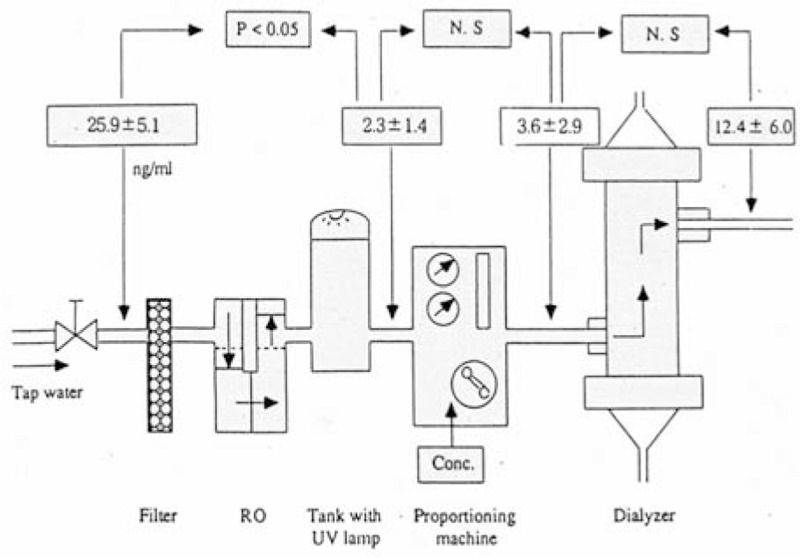
Endotoxin is a component of bacterial outer membrane. Endotoxin is generally a heat-stable toxin that has the various biological activities such as pyrogenicity, macrophage and complement activation.
To determine the source of endotoxin contamination in our water processting and dialysate-delivery system in Korea, endoxin was monitored in tap water at the inlet of water softening, in processed water, at the inlet of dialysate proportioner and in the dialysate at the inlet and outlet of the dialyzer.
These result suggested that a reverse-osmosis system appeared necessary for decreasing endotoxin in tap water to a certain concertration, so the level of endotoxin in the dialysate would be minimal. (Korean J Nephrology, 1998)
Go to : 
A Changes of Electrolytes and Biochemical Components during Hemodialysis
To investigate the changes of electrolytes and biochemical components during hemodialysis in 15 patients (7 men and 8 women) with end-stage renal disease undergoing long-term hemodialysis were studied.
Our data suggested that body temperature might be increased due to removal of urea nitrogen, and blood glucose may be decreased because of the diffusion across dialyzer. In addition, this study showed that intracellular potassium content was lowered, the MCV and membrame potential (Nernst) of RBC was increased during hemodialysis. (Korean J Nephrology, 1999)
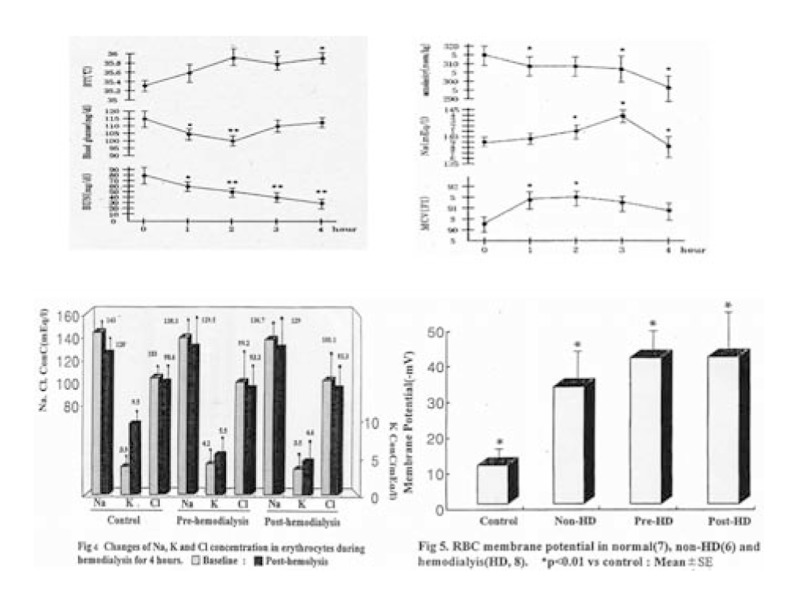
Go to : 
Electrolyte Modulation in Renal Tubule of Patients with Chronic Renal Failure

In chronic renal failure (CRF), extracellular fluid (ECF) volume is maintained close to normal, often until end-stage renal disease is imminent.
This remarkable feat is accomplished by an increase in fractional excretion of sodium (FENa) in inverse proportion to the decline in glomerular filtration rate (GFR). Many researchers have carried out to try to indentify in animal study but human study was not done in Korea.
These results suggest that renal tubular cells of CRF were responsible for the decreased Na+ and K+ reabsorption and enhance K+ secretion. (Korean J Nephrology, 2003)
Go to : 
Articles
1988 : Acute water intoxication during whole Gut Irrigation. Nephron 50(4):393-4
1989 : Leptospirosis. A Study of 93 Patients of Korea. Am J Tropical Medicine & Hygiene 41(3):345-51
1990 : Acute Renal Failure Associated with Dermatomyositis & Colon Cancer. Nephron 55(2): 225-6
1990 : Toxic Acute Renal Failure & Hepatitis after Ingestion of Raw carp Bile. Nephron 56(2): 188-93.
1991 : Changes of Lactate Dehydrogenase & Its Isoenzyme activity in renal diseases. Nephron 57(1):55-9.
2002 : Pathogenesis & treatment of hypernatremia Nephron. 92 suppl 1:14-7.
2004 : A case of Acute Renal Failure, rhabdomyolysis & DIC associated with severe exercise-induced hypernatremic dehydration. Clinical Nephrology 62(5):401-3.
2005 : Acute Pancreatitis associated with Hemorrhagic Fever with Renal syndrome Nephrology 10(4):421-2.
Go to : 
Curriculum vitae
1967 : MD, Chonnam National University Medical School, Gwangju, Korea
1975 : Instructor, Assistant prof. Associate prof. & Professor, Chonbuk National University Medical School. Jeonju Korea
1980 : Membership, The Korean Society of Nephrology, Korea
1983 : Visiting Professor, SUNY, Downstate Medical center. Brooklyn. USA
1984 : Membership, International Society of Nephrology
1987 : Membership, Asian-Pacific congress of nephrology
1990 : Membership, American society of nephrology
1995 : Councillor, Asian Pacific congress of nephrology
1996 : Dean, Chonbuk National University Medical School, Jeonju Korea
1996 : President, The Korean Society of Nephrology, Korea
2001 : Vice-President, Korean Society of Hypertension, Korea : President, Korean Electrolyte Metabolism Study group, Korea
2004 : Membership(councillor), National Academy of Medicine of Korea
2005 : Honorary President, The Korean Society of Electrolyte & Blood Pressure Research, Korea
Go to : 




 PDF
PDF ePub
ePub Citation
Citation Print
Print


 XML Download
XML Download